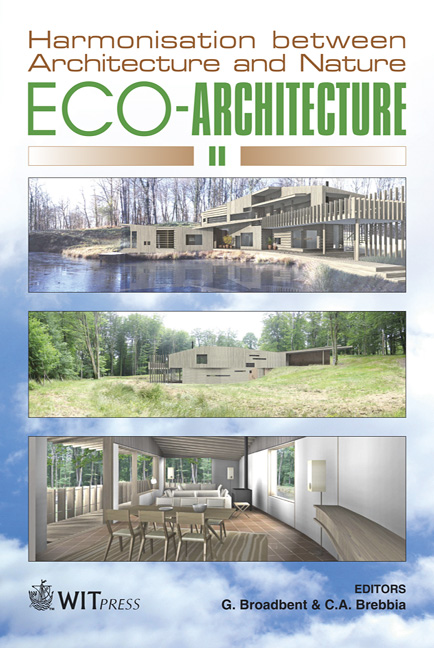Hygrothermic Performance Of The Exterior And Interior Surfaces Of Buildings
Price
Free (open access)
Transaction
Volume
113
Pages
10
Page Range
243 - 252
Published
2008
Size
1,502 kb
Paper DOI
10.2495/ARC080241
Copyright
WIT Press
Author(s)
H. Stopp & P. Strangfeld
Abstract
One of the current tasks of building physics is to find solutions in sense of the sustainability. That means we must save heating energy and raw materials. Therefore we have to develop building envelope parts with innovative characteristics. This paper shows the coupled heat and moisture transfer at adjacent areas of surfaces of the envelope parts of buildings. In this context the interaction of the external and internal surfaces of the building with the outdoor and indoor climate components are demonstrated. Longwave emission and shortwave absorption, driving rain and evaporation cooling on the outside and the adsorption-desorption processes of humidity of the room air inside must be considered in the management of passive air conditioning to create a permissible indoor climate in winter and summer periods. A good modelling of the coupled heat and mass transfer and a validated software play an important role; including knowing the material parameters of the structures. Results of experimental investigation and numerical simulation are discussed with regard to the infrared reflexion of coatings, fluctuation of the relative humidity in the rooms and the problems of mould and algae growth on the surfaces of the inside and outside walls. A mixture of phase change materials combined with hygroscopic bulk materials within envelop parts of buildings will be a solution for an energy saving passive air conditioning in the future . Keywords: infrared reflection, energy saving, hygroscopicity, evaporation cooling, indoor climate, numerical simulation. 1 Introduction In the past the maintenance of the building envelopes and the protection of the construction were the most important consideration. Nowadays, the energy
Keywords
infrared reflection, energy saving, hygroscopicity, evaporation cooling, indoor climate, numerical simulation.





